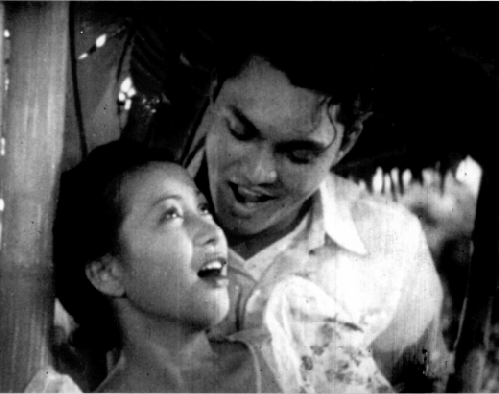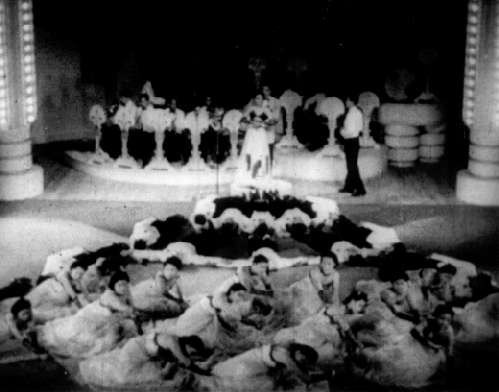Uploaded 16 April 1999
Over the years, the National Film and Sound Archive has become known as one of the world’s foremost film preservation bodies. As well as Australian films, it has often worked with other countries to restore movie treasures from around the world.
A recent challenge was the musical Giliw Ko (1939), in its time a popular film in the Philippines. The Philippine Information Agency (PIA) knew of only one surviving copy, which had been dismissed as beyond repair. One foreign archive had already tried to restore the film, without success.
Despite this, the Australian Government offered to restore Giliw Ko as a Centenary gift to the Philippines. As the surviving copy was damaged – the film stock was badly warped – the copying process was complex. Also, the image and sound quality of the 16mm print was well below the quality of the original 35mm format.
A new 35mm copy of Giliw Ko was printed from the surviving 16mm copy, but not without problems. “The copy had shrunk over the years, so it was actually smaller than 16mm,” says Steve Clark, one of the Archive’s film technicians. “The perforations could no longer fit through the film printer! Instead, the film had to be carefully hand-fed into the machine.
“Two people were needed in the darkroom. One would feed the film through the printer. The second person would check that the film stock was moving smoothly, and make sure that the original was not being damaged. There were nine reels, and each took an hour to print!”; Three times the normal time.
The soundtrack was copied separately from the image, then digitally restored and enhanced. For an Australian audio technician, unfamiliar with the Filipino language, sound synchronisation was a delicate task, despite the help of a visiting PIA officer.
Altogether, the film took three months to restore, involving nine individual technicians. It is a practical example of cooperation between the archives of two countries, with staff exchange in both directions, and PIA producing the final release print from the Archive’s work.
As an archival project, undertaken for cultural reasons, it was limited to a budget of only $30,000 – a far cry from the budget given to commercial restorations of films such as Vertigo and Gone with the Wind . Nonetheless, it was a significant achievement, resulting in new, cinema-ready copies of one of the Philippines’ important early sound feature films. In November 1998, thanks to the efforts of the Archive and PIA, the “lost film” of Giliw Ko had its first public screening in nearly 60 years in Manilla.

Phillipine actors Mila del Sol and Fernando Poe in Giliw Ko
Elaborate dance scene from restored movie Giliw Ko
Mark Juddery, National Film and Sound Archive, Canberra
(This article was originally published in The News , Summer 1998-99, p.5. It is republished here by courtesy of the NFSA)

